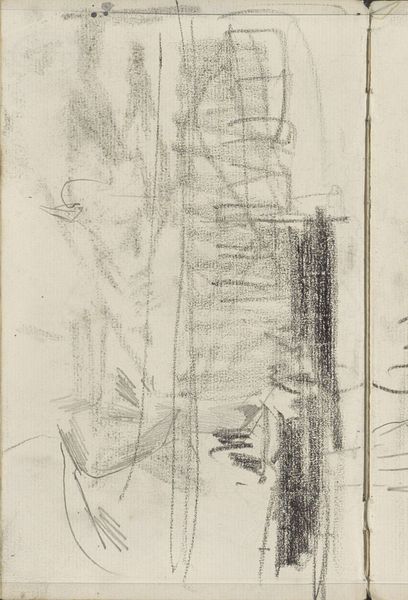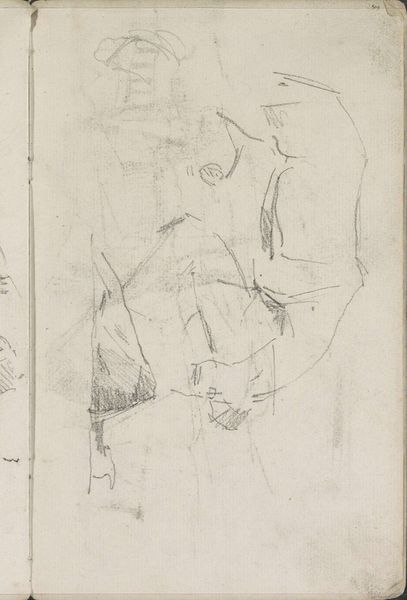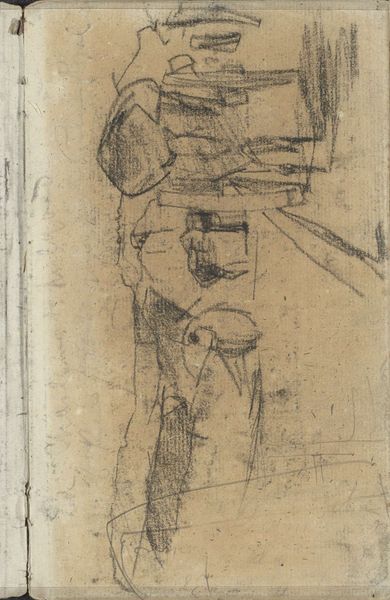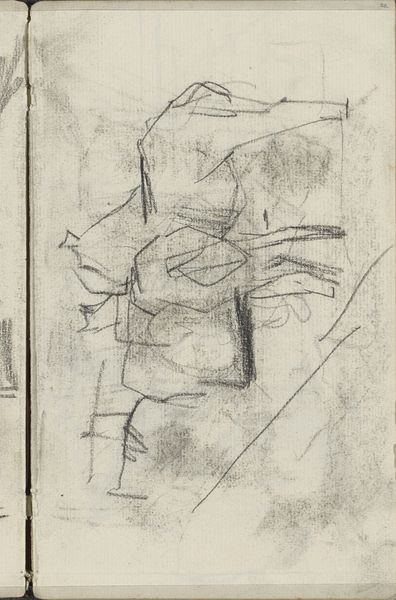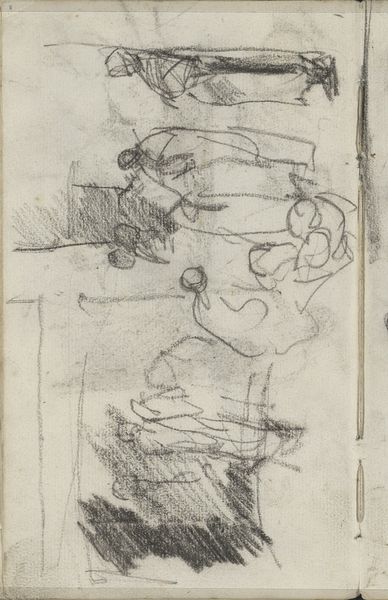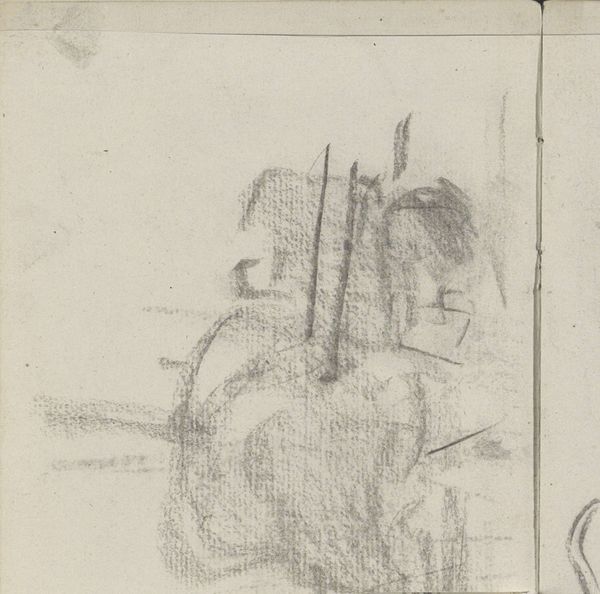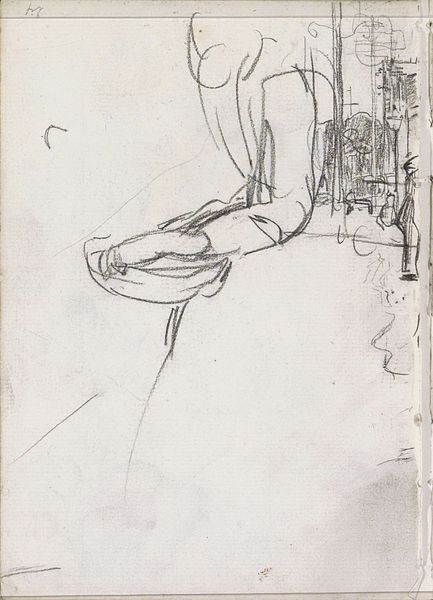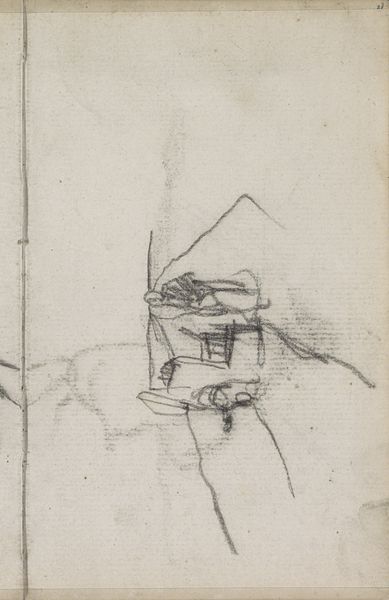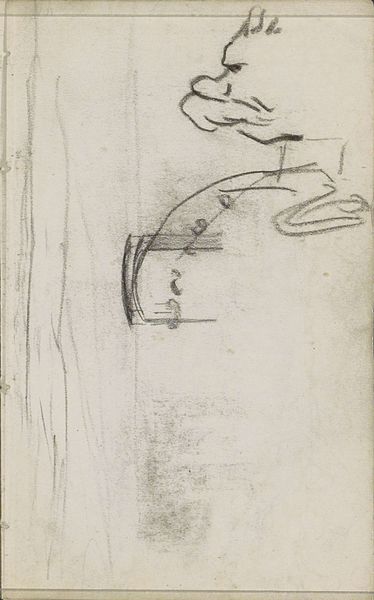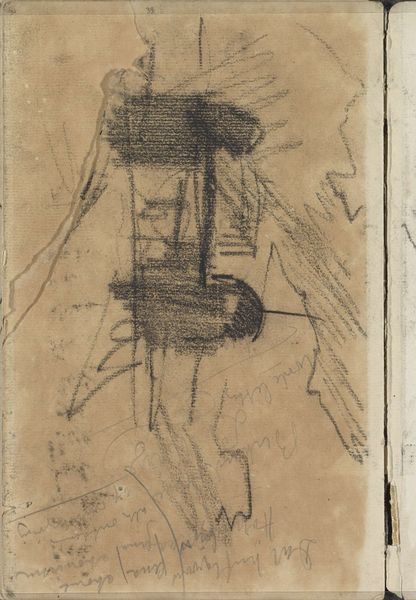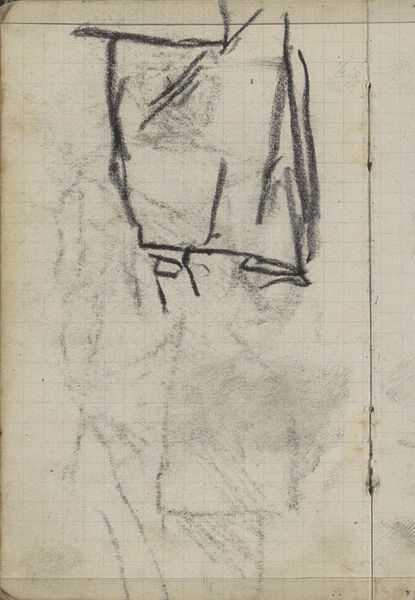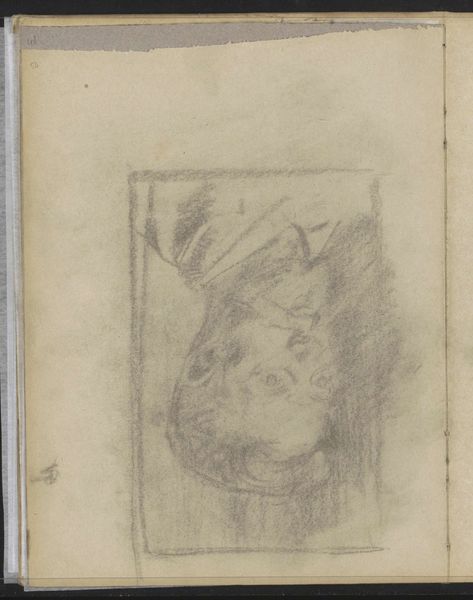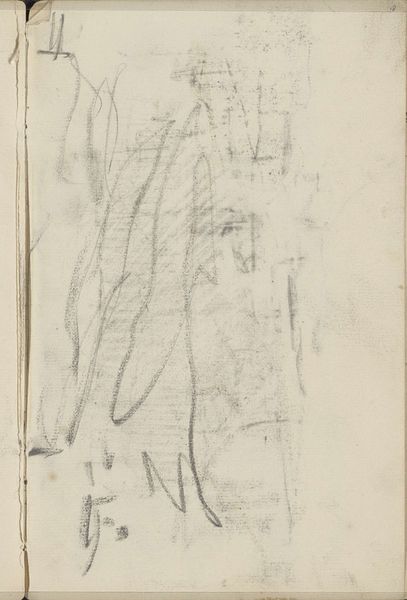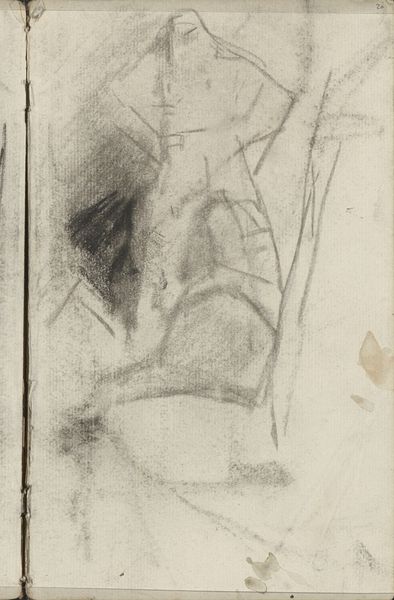
drawing, paper, pencil
#
portrait
#
drawing
#
pencil sketch
#
paper
#
pencil
#
realism
Copyright: Rijks Museum: Open Domain
Curator: There’s an interesting tension in this drawing. We’re looking at "Vrouwenhoofd," or "Head of a Woman," created between 1884 and 1886 by George Hendrik Breitner. It’s a pencil sketch on paper, currently residing here at the Rijksmuseum. Editor: My first impression? It feels fleeting, almost like catching a half-remembered dream. It is a portrait, but the unfinished nature and soft lines make her feel distant and maybe even melancholy. Curator: Breitner was known for his urban scenes, capturing the raw reality of Amsterdam life, so this intimate portrait offers a different glimpse into his artistic approach. Breitner was deeply influenced by the Impressionists. We can observe in his oeuvre a strong Realist sensibility, influenced by his active participation in socialist and anarchist movements. Editor: Exactly, there's an immediacy to it. The pencil lines are loose, capturing the essential form without dwelling on details. You can almost see his hand moving across the paper, rapidly trying to record a particular moment or feeling. He isn't simply representing an anonymous sitter. I am compelled to guess the woman’s story and her background; maybe she works in town as a shop attendant. Curator: Right, his intention appears to be more evocative than documentary, wouldn't you agree? It seems he deliberately left parts of the drawing unresolved, enhancing this sense of immediacy and ambiguity. Breitner's goal was to portray his sitters just as ordinary citizens who worked in service jobs. Editor: And that makes me think about who got represented in art then and how "ordinary people," especially women, weren’t always seen as worthy subjects of high art. The way she's framed, almost floating on the page, contributes to this dreamlike quality. It pushes us to contemplate identity, visibility, and how we perceive women of that time. Curator: A lot is implied here, urging the viewer to engage and consider a topic like identity. Breitner was using portraiture to depict subjects of a larger sociological conversation about industrial growth, wealth distribution, labor wages, social status, political representation and other concerns and issues of the late 1800s. Editor: Looking again, I am appreciating how, even in its incompleteness, the drawing offers so much. Its ethereal nature feels unexpectedly potent, lingering long after you turn away. Curator: Absolutely. It offers a fresh look at both Breitner and the social issues of the late 19th century, one small but evocative drawing at a time.
Comments
No comments
Be the first to comment and join the conversation on the ultimate creative platform.
